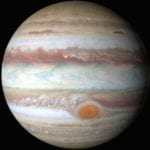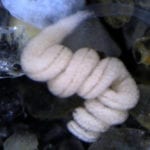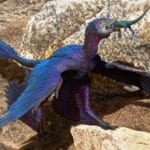 Politics
Politics  Politics
Politics  Weird Stuff
Weird Stuff Ten Bizarre Facts About The Doge Meme
 Our World
Our World 10 Ways Your Christmas Tree Is More Lit Than You Think
 Movies and TV
Movies and TV The 10 Coolest Stars to Set Sail on The Love Boat
 History
History 10 Things You Didn’t Know About the American National Anthem
 Technology
Technology Top 10 Everyday Tech Buzzwords That Hide a Darker Past
 Humans
Humans 10 Everyday Human Behaviors That Are Actually Survival Instincts
 Animals
Animals 10 Animals That Humiliated and Harmed Historical Leaders
 History
History 10 Most Influential Protests in Modern History
 Creepy
Creepy 10 More Representations of Death from Myth, Legend, and Folktale
 Politics
Politics 10 Political Scandals That Sent Crowds Into the Streets
 Weird Stuff
Weird Stuff Ten Bizarre Facts About The Doge Meme
 Our World
Our World 10 Ways Your Christmas Tree Is More Lit Than You Think
Who's Behind Listverse?

Jamie Frater
Head Editor
Jamie founded Listverse due to an insatiable desire to share fascinating, obscure, and bizarre facts. He has been a guest speaker on numerous national radio and television stations and is a five time published author.
More About Us Movies and TV
Movies and TV The 10 Coolest Stars to Set Sail on The Love Boat
 History
History 10 Things You Didn’t Know About the American National Anthem
 Technology
Technology Top 10 Everyday Tech Buzzwords That Hide a Darker Past
 Humans
Humans 10 Everyday Human Behaviors That Are Actually Survival Instincts
 Animals
Animals 10 Animals That Humiliated and Harmed Historical Leaders
 History
History 10 Most Influential Protests in Modern History
 Creepy
Creepy 10 More Representations of Death from Myth, Legend, and Folktale
10 Rare Finds Proving The Ocean Is A Weird Place
Deep under the waves, the ocean is not just a dark place. The underwater landscapes hold ancient events, mysterious animal behavior, and vast gardens of glass and octopuses.
Each contributes new facts and riddles to this incredible aquatic world. However, the ocean also has a scary side—from wrecking the weather on land to blowing giant holes in the seafloor and countries.
10 The Loudest Fish
One can be forgiven for not associating fish with noise. More often than not, they are mute. One species, however, can be very vocal during reproduction. The Gulf corvina is a large, silver fish about the size of a snowboard.
During spring, when the tides and lunar phases are perfect, shoals migrate to the Colorado River Delta. The event is an unforgettable one and worth seeing. When corvinas gather, they pack together in a sheet that can span for miles.
In 2014, scientists followed the spawning shoal and used underwater equipment to record their sounds. The loudest noise captured during the study hit a deafening 150 decibels, which is a record among fish.
Additionally, the sound also rated among the loudest ever recorded underwater—and very capable of damaging the hearing of other creatures, including sea mammals. Researchers believe that male corvinas are responsible for the chorus. Similar to frogs and crickets, the boys produce a throaty croak to attract females.[1]
9 Return Of The Blob
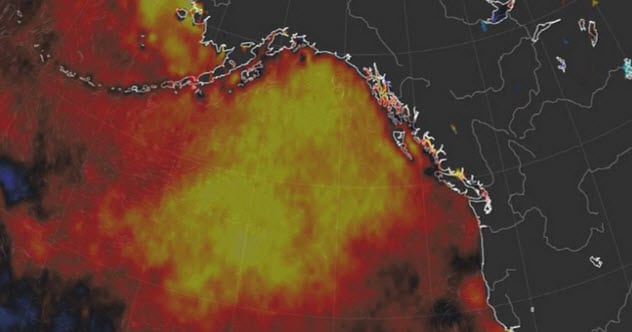
“The blob” is not as adorable as it sounds. This massive anomaly—a patch of hot water in the Northeast Pacific—affects the weather in extreme ways. The blob was blamed for the persistent California drought (2013–2015), Seattle’s hottest year (2015), and the freakish polar vortex intrusions of two winters (2013–2014 and 2014–2015).
In 2018, the return of the oceanic hot spot was caused by unusually warm weather in Alaska during the fall. Though the blob is famously crabby, it remains hard to predict the phenomenon’s moods.
When it made another appearance in 2016, the spot showed many signs of troubling times ahead but faded away before anything could go wrong. The latest manifestation leans toward weakening in the same way, but even the experts admit that nothing is certain when it comes to the blob.
Either way, Alaska has already suffered notable damage. The southeastern rain forest is in the grip of a persistent drought, and snowfall showed a record delay.[2]
8 Rectangular Iceberg
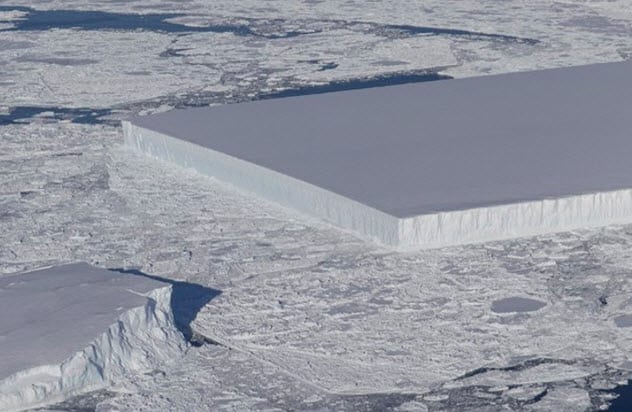
In 2018, an unusual photo turned an iceberg into a social media star. A far cry from the usual mountain-shaped behemoths, this icy wonder was almost perfectly rectangular and flat.
As it turns out, this shape is not unknown to scientists. Called “tabular icebergs,” they form during calving (when pieces dislodge from a parent iceberg). The rectangles commonly occur after an ice shelf extends too far and then breaks off at the tip. This gives them a geometric shape.[3]
A whopping 90 percent of the tabular iceberg remains hidden underwater. This unseen part is usually perfectly angular, too. In this case, the sheet came from the Larsen C ice shelf on the Antarctic Peninsula.
Even though these floating tabletops are known to science, this one was unusual. For once, it was almost short enough to be a square. The size of the object remains unknown. But judging from the image, it could be as long as 1.6 kilometers (1 mi).
7 Largest Octopus Nursery
Most octopuses live solitary lives. This made the discovery of about 100 nesting together near Costa Rica a sensational find. However, this nursery paled in comparison to another found by accident in 2018.
Off the coast of California, marine biologists steered a remotely operated vehicle at a depth of 3.2 kilometers (2 mi). The goal was to study an underwater volcano called the Davidson Seamount.
As the vehicle turned a corner, it happened across the world’s biggest deep-sea octopus garden. The species was Muusoctopus robustus, and over 1,000 huddled together. Nearly 99 percent were females guarding eggs between the volcano’s cracks.[4]
Their unprecedented conglomeration is not the only unanswered question about the Davidson group. Researchers do not know why the water appears to shimmer around the octopuses.
One theory suggests that heat is behind the glitter, which could explain why the creatures gathered at Davidson to successfully incubate their eggs. Since the volcano is extinct, the heat could be coming from an unknown source.
6 Canyon That Removes CO2
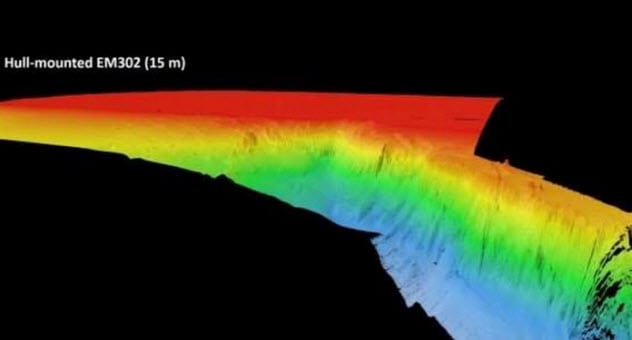
The Porcupine Bank Canyon is an underwater trench marking the border of Ireland’s continental shelf. In 2018, an effort was made to map the sheer cliffs and contours. Near the canyon’s edge, the research drone discovered something amazing: The underwater trench removed carbon dioxide (CO2) from the atmosphere using two species and death.
Porcupine Bank came fringed with corals snacking on dead plankton. While dwelling near the surface, living plankton grow by packing their bodies with CO2 from the atmosphere. When they die, they sink down into the ocean, taking the CO2 with them.
In turn, the corals eat the plankton and use that carbon to build their own structures. When the coral perishes, it tumbles deeper into the canyon. Researchers found a massive amount of dead coral inside the canyon, all with CO2 locked up inside them.[5]
Sadly, this process cannot stop climate change. But at least, it showed that nature has ways to remove some of the greenhouse gas from the air.
5 Garden Of Glass
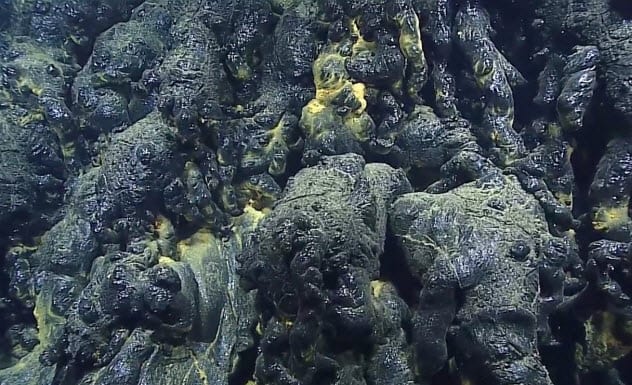
When the deepest volcano was found in 2015, it was not just a cone-shaped mountain lower than the rest. It was anything but plain—and very unexpected. A deep-sea submersible was investigating the Mariana Trough in the Pacific Ocean when it reached a depth of 4,500 meters (14,700 ft). There, it encountered an environment straight out of a Gothic novel.
An underwater volcano had released intertwined and blackened lava tendrils, which scientists likened to “a nightmarish garden of glass.” Inside a 4.5-kilometer-deep (3 mi) trench, cold water had rapidly cooled the lava into a glassy substance. The frozen twists and turns covered an area 7.3 kilometers (4.5 mi) long.
The visuals are heart-stopping, but something else turned the discovery into a scientific gem. The deepest volcanic eruption on Earth was also fresh. Only a few months old, the undamaged site can advance knowledge about volcanoes on land, how eruptions affect ocean chemistry, and when different species colonize a lava field.[6]
4 White Shark Cafe
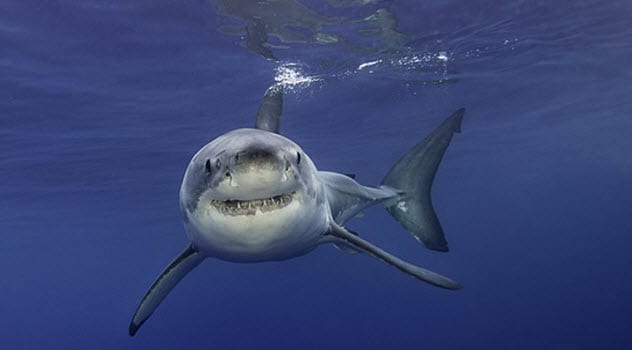
Once a year, a group of sharks confused biologists. Known as the northeastern Pacific great whites, they normally cruise California’s coast, a region rich with prey.
In December, the sharks journey into the Pacific and stop about halfway to Hawaii. Satellite studies suggested that the place, nicknamed “White Shark Cafe,” was a marine desert without prey. Despite this, the predators gathered in droves and stayed for winter and spring.
In 2018, scientists wanted to know how the sharks survived and why they found the location so attractive. They followed the whites and also tagged a few. When the research boat arrived at the cafe, they found the place teeming with fish, squid, phytoplankton, and jellyfish.[7]
These critters took daily trips up and down from the depths. The tagged sharks showed that the predators did the same thing. During the day, they hunted up to 450 meters (1,500 ft) down. At night, they kept to shallow dives, about 200 meters (650 ft).
An unusual gender mystery turned up. During April, the males dramatically stepped up their activity to around 140 dives a day. Researchers do not understand why this behavior is displayed by only one gender.
3 Methane Craters
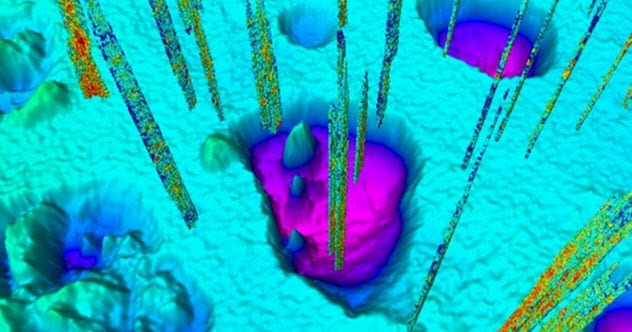
Recently, scientists visited craters lining the seafloor between the archipelago of Svalbard and Norway. First discovered in the 1990s, they were huge but few. Upon arrival, the team was shocked to find hundreds of previously unrecorded holes.
In a single area near one of Svalbard’s islands, the floor was pockmarked with more than 100. Astoundingly, they had been blown from solid bedrock. The sheer force created craters that measured up to 1,000 meters (3,280 ft) in diameter. The culprit was methane gas from the last ice age.
In the past, enormous ice layers kept the trapped methane in place. Once these melted, the gas exploded. The largest pockets blew 12,000 to 15,000 years ago, but some remain intact and could punch large holes south of Svalbard.[8]
Satellite images showed that pingos, hills with ice cores, preceded most of the craters. Researchers suspect that the Norwegian pingos had frozen gas instead of normal ice and were possibly instrumental in an explosion. Incredibly, once scientists knew what to look for, they found 7,000 gas-filled pingos in thawing permafrost.
2 Lost Volcanic World
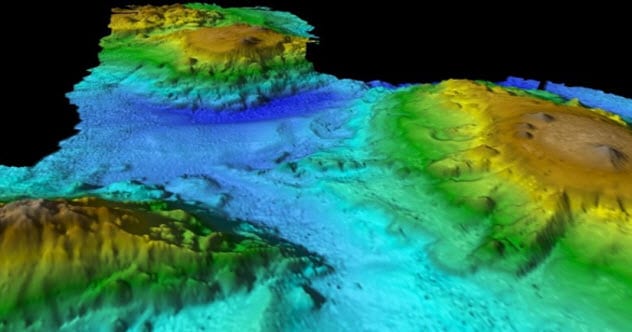
In 2018, scientists investigated something that would not raise many eyebrows—the link between the East Australian Current’s nutrient levels and how phytoplankton behaved. Part of this study included mapping the seafloor. A stunning discovery followed—a lost world dominated by dramatic volcanic peaks.
Some were sharp, while others resembled immense plateaus. Smaller cones made up the rest. Located near the east coast of Australia, the extinct volcanoes towered 3 kilometers (1.9 mi) high.
The depth of the valleys likely contributed to how this underwater wonderland avoided detection for so long. The highest parts of the mountains were still 2 kilometers (1.2 mi) below the surface.
Years of research are required to understand a large geographical area that is seen for the first time. However, researchers are positive about one exciting suspicion—this was the spot that helped Australia and Antarctica to separate 30 million years ago.[9]
The birth of the volcano chain was pivotal to crumble the Earth’s crust in preparation for continental division. The landscape also hosts a breathtaking ecosystem, including a huge pod of at least 60 pilot whales.
1 Brewing Eruption Underneath Japan
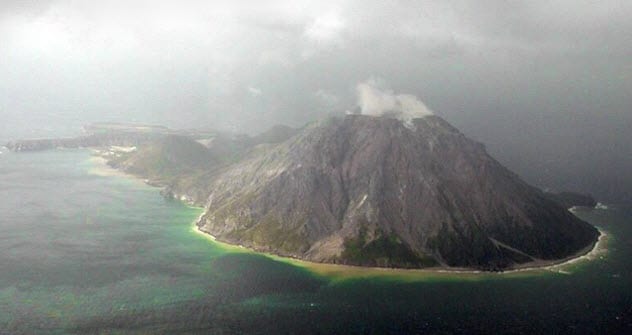
Researchers are well aware that an ancient, underwater volcano lurks underneath Japan. The Kikai Caldera is prone to super-eruptions and, in the past, experienced three devastating episodes. The last time was 7,000 years ago. The eruption was one of history’s biggest and destroyed a vast area of the Japanese archipelago.
In 2018, several expeditions using a wide array of equipment all came to the same conclusion. Underneath the Kikai Caldera was a massive lava dome. The giant bubble held over 32 cubic kilometers (8 mi3) of magma.
Analysis showed that the dome contained lava chemically different from the last eruption. This meant that the giant structure was not a leftover of the event that razed the Japanese archipelago but a completely new formation.
For thousands of years, the magma continued building up inside this new reservoir—something scientists view as a preparation for the next super-eruption. Earlier research indicated that the probability of a caldera catastrophe in the next 100 years was about 1 percent.
The discovery of the active dome was not so comforting. Should Kikai erupt, 110 million people would be in danger.[10]
Read about more bizarre underwater discoveries on 10 Bizarre Recent Ocean Discoveries and Top 10 Unbelievable Things Found Underwater.
